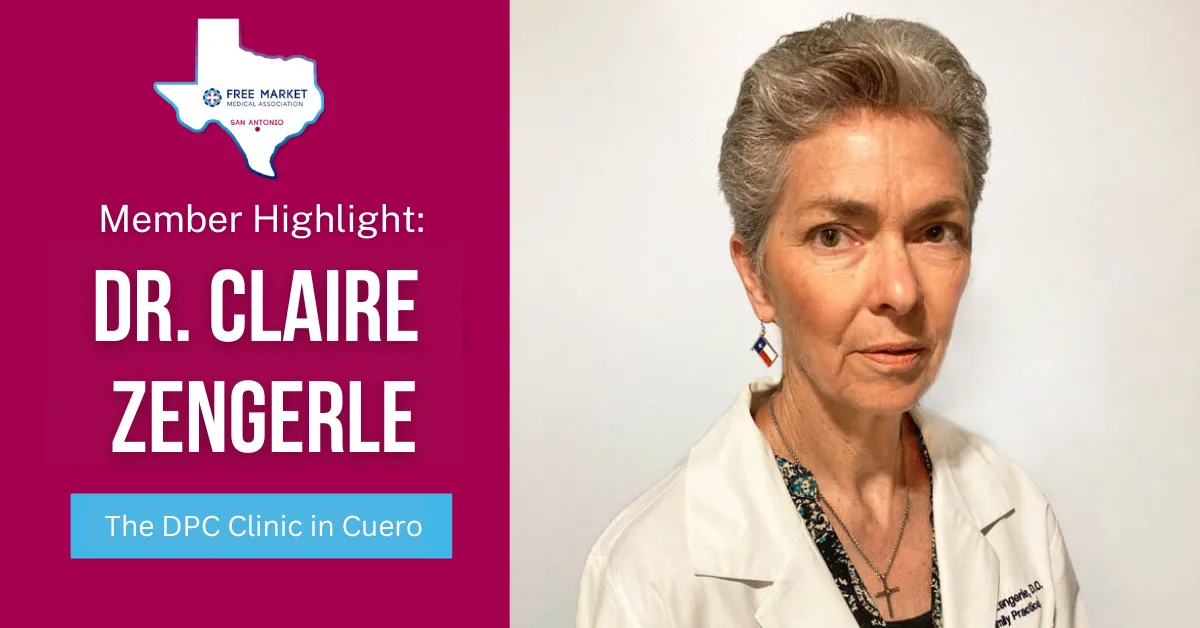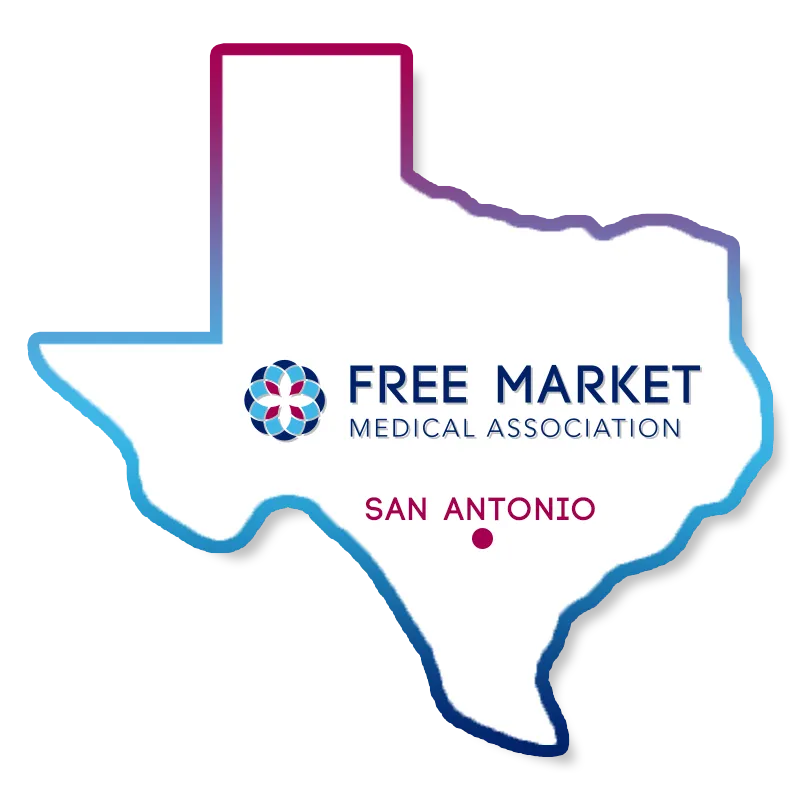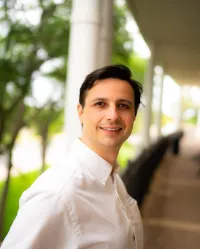Contact Us
sanantonio@fmma.org
Follow Us:
Our Blogs

San Antonio FMMA Member Highlight: Dr. Claire Zengerle
Member Highlight: Dr. Claire Zengerle
The purpose of our member highlights is to shine a spotlight on outstanding individuals who form part of a groundbreaking network as members of the revolutionary San Antonio Free Market Medical Association. For our November 2022 issue, we chose to highlight Dr. Claire Zengerle, founder of Zengerle Medical Clinic.
Where is Cuero, Texas?
“It’s about 90 miles from San Antonio, I would say South East of San Antonio.”
For someone who lives in a city like San Antonio, can you explain what Cuero looks like because it’s a completely different setting, right?
“It looks like small town America. It has an old main street with historic buildings downtown. It's the home of the Gobblers which is a well known football team in Texas, they’ve won state championships before and the community supports them. It has a wonderful courthouse, a nice downtown, good people, the usual train that runs through. I may not get the population right, I’m guessing 7,500 but don’t quote me on that.”
Are you from Cuero?
“No, I grew up in Corpus Christi. We lived in the north west part of town and I went to high school at Calallen. When I was growing up there, it had kind of a small town feel even though it was in the Corpus Christi city limits. I had a really wonderful time in high school and I still try to keep up with some of the people down there.”
Usually, people have something formative that happened in their childhoods, either through what their parents did or their environment. Is there an event you recognize as something that has impacted your character?
“I am the youngest of four girls. When I was 6 years old, my father passed away and my mother became a single parent. She only had a high school education and still had to look after her two youngest girls so she buckled up, went to college, and got her teaching degree. I think she did a very good job of all the stress and struggle of having to go to college, get a teaching degree, a teaching job, and put up with us going through high school.
I was in athletics. I played basketball and ran track, and I always felt very supported in that. Some of the coaches were very good mentors to me… so I feel like I got a good work ethic there.
I went to college at A&I at Kingsville, which is now a part of the Texas A&M system, where I was thinking I would be a coach. Then I kind of switched gears and changed my major so I ended up staying in undergrad for a good while and decided to try to get into medical school during that time.”
Was getting into medical school difficult for you?
“I didn’t get in the first time so I applied again. I got a job at the local hospital in Kleberg County in Kingsville and that helped solidify what I was going to do. The medical director, the physician who was an internal medicine doctor, was very supportive of me trying to get into medical school. I also had a health professor, I was a Health and Physical Education major, who was also really supportive. After I managed to get in, it was challenging working and going to school.”
I know you’re a DO, was that something that was clear to you from the beginning? That you would go down that route?
“I had applied to allopathic and osteopathic medical schools but the more I studied and learned about the osteopathic philosophy, I kind of gravitated toward that. It was kind of what I wanted to do because it incorporates all of the allopathic world but you learn additional skills in osteopathic manipulation and it’s kind of up to you how much you want to use that or not. It also stresses importance in how the musculoskeletal system affects the rest of the body being in tune. People think it’s kind of like a chiropractor but it’s not really chiropractic because there are so many different techniques. But yeah, I really liked the philosophy and still do. It kind of gives me more of an open mind, I think. It also allows people to have a bigger role in the decision making in their healthcare.”
What was your professional journey? Did you regret certain phases? Also, how did you eventually decide that it was time to open a DPC practice?
“I graduated then moved back to Corpus where I did my three year family practice residency at Memorial Medical Center. I was able to make some contacts here in town as I did moonlighting. I also did moonlighting in Referio Hospital, a little town south of where we live, and then I did a little bit of moonlighting in the ER here for one of the doctors that needed help in Goliad. Goliad is the next town down the road from Cuero. So, Cuero was helping manage the clinic in Goliad. It all just kind of fell into place. I was able to help pay back loans… It always kind of geared going back to this small town and starting a rural health clinic.
We didn’t run the clinic at the time, the hospital owned it. We kind of contracted work for the hospital so we weren’t employees, we were contractors which changed over time. Then the hospital didn’t want to run the clinic several years later… So between myself and the two other doctors and one of the doctors’ spouses, who was the business manager, we had to kind of start all over and run our own practice–it worked out well. Although, I personally didn’t pay much attention to the management of it, I just wanted to see patients and not worry about it. I still had no intention of running my own solo practice at that time. Then the hospital wanted to buy the clinic, so we sold the practice back and became hospital employees. Management changed again and it kind of went south as far as my philosophy and how they wanted to run things.
I decided I wanted to do something completely different and went to work for the VA Clinic in Victoria, Texas. I worked there for about three and a half years and that was a whole different ball game. The best part of the VA was the veterans. Taking care of the veterans was just awesome, they were good but the delivery left a little to be desired. Then I decided to do something different and I took it back to rural practice and worked at LaVaca Medical Center part-time from this past August until June. At that time I had decided I wanted to run my own practice and started looking at Direct Primary Care.”
Explain to us what Direct Primary Care is and why you felt so compelled to start practicing along that healthcare delivery model.
“Direct Primary Care is a different model of delivery of healthcare. I don’t bill any private insurance, Medicare, or Medicaid. It’s totally cash pay and because there’s no middle man, I don’t have to fight with insurance companies so the prices are significantly lower. Direct means I deal directly with you, the patient. In my office, primary care is just the patient and I. Also, one of the goals is transparency and pricing so there’s no surprises. I have almost all the prices listed on my website. I have a list that I can give to patients in the office that also explains my prices and membership prices. It’s been incredible and we’ve, so far, been very well received.”
Direct Primary Care is not really familiar to people, how was that received in your community?
“We didn’t really know how it was going to go because it is a whole new concept so, you know, you do have to do a lot of educating and explaining. SHANKX built a website for me and it was incredible… I knew I wanted to have someone who knew something about Direct Primary Care and of course, they did. They’ve been very responsive about making changes and constantly managing it. And the fact that I can get the prices there, explanations, and the forms, etc.
Direct Primary Care is having access to me. If they’re a member, they can contact me 24/7 through an app called Spruce in which they can send me messages, pictures, documents, requests for appointments, telemedicine options, etc.”
When was your opening? And how have you liked it so far, as a professional, since it’s a very different way of doing what you do?
“It was on August 1st, and I’m very thrilled. I’ve been a lot happier in my practice than I have been in a long time. You know, the whole burn out thing was starting to kick in for quite a while, but I don’t have that anymore and I really look forward to it.”
That’s super exciting. I really have to commend you for your fearlessness in being a business owner and jumping head in. What advice do you have for other physicians who are thinking about doing something similar? What should they have in place before they take the jump?
“Boy, I still consider myself a newbie and learning on the fly and as I go. I would say… just do your homework, learn what Direct Primary Care is and see if it’s for you. I don’t know, it’s hard to imagine that after you start you don’t see how it’s for you as you’ll have such a better lifestyle…you can deliver more to the patient and not hurry them up. You can listen to them and take care of their needs and spend some time with them. If they want to be out in a hurry, that’s their call.
It’s just going to depend on where you are, if you have to pay rent on a building or if you have your own building. We had a little bit of a different situation where we bought a building that needed to be finished out.
Just do the homework, make sure you can get the lab prices, make sure you understand membership, see what the prices are in your area and be competitive with that.”
And you are very reasonable, what are your rates?
"$49 a month. That means you pay less than a cup of coffee a day for a membership where you have access to me. Visits are $30 whether you want to come in-person or do a telemedicine visit. We have wonderful lab prices as well. Most of the tests you also don’t have to pay for. Established patients also get an hour long appointment which is amazing compared to the usual 15 minutes."
As someone who’s interested in entrepreneurship and business ownership, I’m curious. Do you have a mentor or where do you learn currently with all that you’re having to do right now?
"Well, with DPC I’m going to have to give all the credit to Dr. Roger Moczygemba in San Antonio at Direct Med Clinic. I kind of bugged him to death and he’s been very helpful! I went up to visit him in San Antonio… he’s answered a lot of our questions and has just been very helpful. Of course, SHANKX as well have been very helpful and gotten me out of a bind many times."
Any final thoughts?
"If there’s something I can help you with regarding your healthcare, let me know. We can do minor emergencies, skin biopsies, skin removals, annual exams, etc. most of your healthcare needs we can take care of."
To hear more from Dr. Zengerle about her insider’s perspective into the healthcare industry, make sure to watch the video interview, conducted by Shankar Poncelet, CEO of Shankx Web Development and a chapter leader of the San Antonio FMMA, below:
https://www.linkedin.com/posts/shankarponcelet_entrepreneurship-texas-directprimarycare-activity-6976328879560945664-iqCM?utm_source=share&utm_medium=member_desktop
About the San Antonio Free Market Medical Association
Organized in 2019, Roger Moczygemba, MD and Shankar Poncelet came together with the goal to lower the cost of healthcare in San Antonio through price transparency, reference-based pricing, and local connection.
The San Antonio FMMA recognizes the three pillars on which the national FMMA was founded by Jay Kempton and Dr. Keith Smith in 2014:
1. Price is not a product.
2. Value is mutually determined and requires transparent pricing and quality.
3. Cash is king, the equality of price is critical.
The FMMA connects buyers and sellers of healthcare, educating and motivating them to work together based upon a mutually beneficial relationship built on the pillars. To learn more, visit https://SanAntonioFMMA.org or contact sanantonio@fmma.org
This member highlight is brought to you by Shankx Web Development and Consulting. For more information, please visit https://shankx.com/

Follow Us
Follow Us
© Copyright 2025. San Antonio Free Market Medical Association. All rights reserved. Site by SHANKX.
